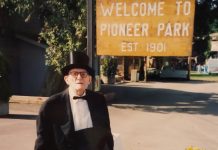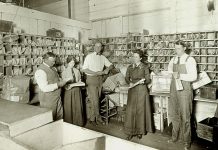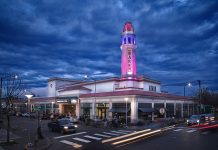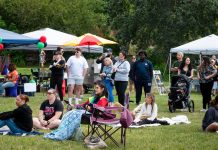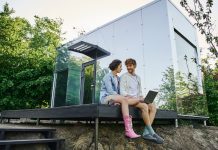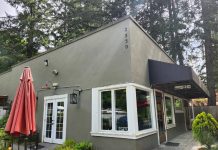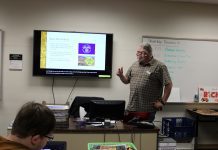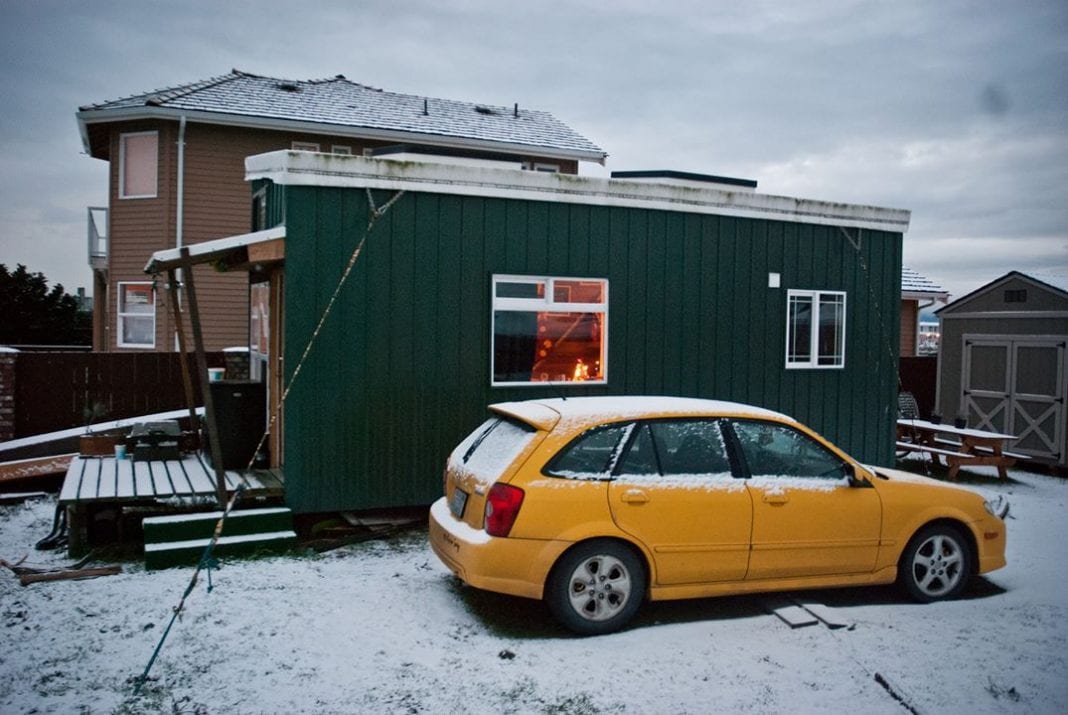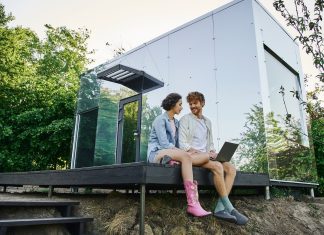It’s a drizzly rainy morning just north of Bellingham. Across the bay, Lummi Island lies surrounded by the Pacific Northwest mist. Seagulls soar above the tiny green home tucked into the waterfront property. Inside of the tiny home, it’s quiet, warm and serene. The tranquility here is a peaceful reprieve from bustling urban life, overlooking the ocean, far removed from sounds of the city.
Brad Widman built this moveable home after wanting to move out of his parents’ house during college. The catch was, he didn’t want to have to pay rent. From there, Brad’s idea of creating his own tiny home was born. Living more fully, simpler. Brad dared to make that dream into reality.
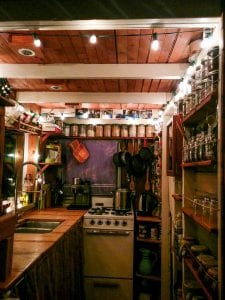
The house is quaint and spacious while being merely 24 feet long. Everything in the house is placed with meticulous thought and care. There simply isn’t room for frivolous items here, just the necessities. The entrance is lined with soft lighting and beautiful wood, collected and repurposed from the fence of a 1920’s home, giving it a cabin feeling.
Though it is only a 169-square foot blue print, there are nine windows, two sky lights, a five-gallon compost toilet, a shower and one very friendly goldfish affectionately named Hidalgo. Hidalgo lives above the kitchen table and for house size reference, his tank can be viewed from nearly every corner of the home.
Brad explains that most people spend thirty thousand to one hundred thousand dollars to build their dream tiny home. “I spent less than what most people do on rent for one year and I owned my own home by the time I was 22!” Brad says. Although he aimed to build the tiny home in three months’ time, it took over a year and a half. The biggest difficulty, Brad explains, was the financing, which consistently halted the building process.
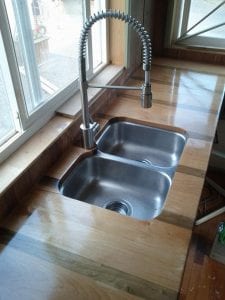
The way that the tiny home came to be built, he explains, was by finding deals on Craigslist, visiting the RE Store, utilizing Facebook and talking to friends. “I was so motivated to build the tiny home, as I was working and going to school and was trying to move out of my parents,” he says.
Brad is currently working on a second tiny home, with the dream that one day, he can have a property with both the tiny homes on it. Where Brad built nearly every single piece that went into his first tiny home, he realizes that it’ll be easier to add in pre-constructed items when appropriate for the second. For the next tiny home, he is hoping to embody the feeling of, “Where rustic and modern meet.”
Nearly every piece of the original tiny home was hand built by Brad, with the help of many wonderful, supportive friends. The goal was for it to be as unique and hand-built as possible, both for the look as well as the money-saving aspect of building everything himself, he explains. “Google taught me how to do plumbing,” Brad says with a chuckle.
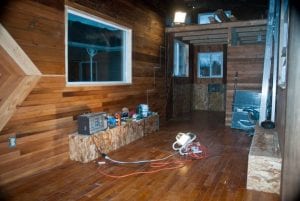
The beauty of building the tiny home was seeing the community come together to help make it from a dream into a reality, Brad explains. Friends helped with the framing and the welding, teaching him how to do electrical wiring. They came together to support their friend as he brought his dream home from drawings into life. “I’d recommend this life to everyone, except for maybe big families,” Brad explains.
He averages about 35 dollars a month during the summer for electric and propane but besides that, there aren’t any bills. It’s a wonderful way to live with a reduced carbon footprint and it fosters a simpler lifestyle.
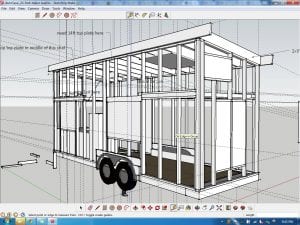
One concern about living in a moveable tiny home during the winter months in Washington, Brad says, are the winds that we get here on the West coast. The tiny home has withstood 50-mile winds frequently over the last several years on its beachfront property. Brad strapped it down with cross-ties so that he can live on the coast even during the winter in his tiny home. On really cold winter mornings, the water in the tiny home often doesn’t heat up until midday, but it’s worth it, Brad says.
Tiny homes are currently only allowed in RV parks or on private property due to regulations, which makes it difficult for tiny home owners to find locations to live. But the idea of being able to live affordably, on a small-sized scale, could completely redefine the American way of living. Tiny homes create the possibility of living more simply, with less of an environmental footprint, while being able to own your own home without debt. This could minimize the average individual’s debt substantially, while creating affordable home owning opportunities that haven’t existed for nearly 20 years. Tiny homes truly hold the possibility for change within our communities, by rethinking our lives in a smaller scale.
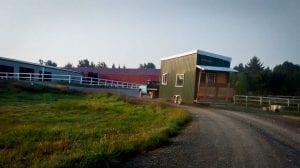
Brad is already sketching his next tiny home, working on the design and layout. He has the trailer he’ll use for it and bit by bit, it is beginning to come together, he says with a wide smile. He hopes to promote community awareness of tiny homes by showing the second home at the farmers market. He would like to inspire others to create their own dreams in a tiny house. Already, he sees the promise the next one holds, the potential within his new tiny home. Step by step, with a little help from his friends, he’ll turn this big dream into reality too.









